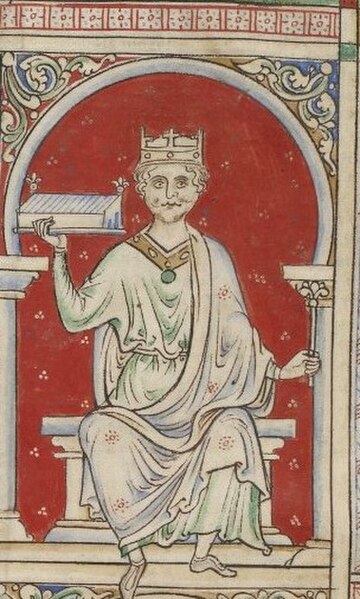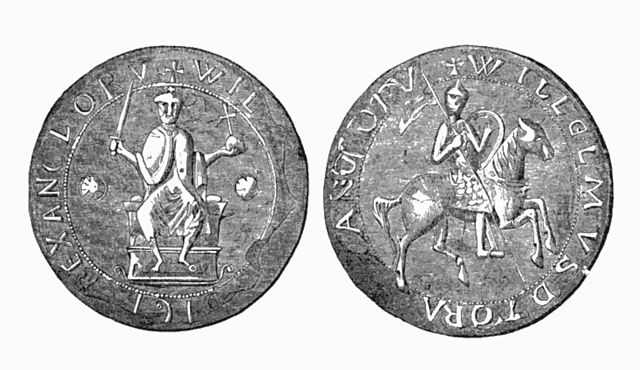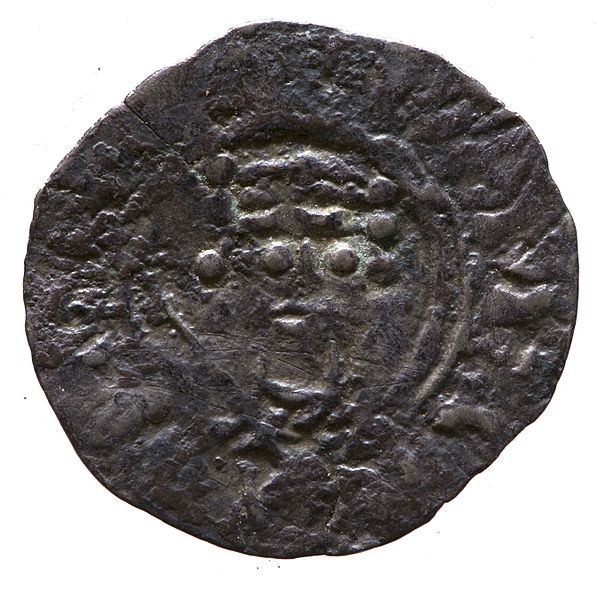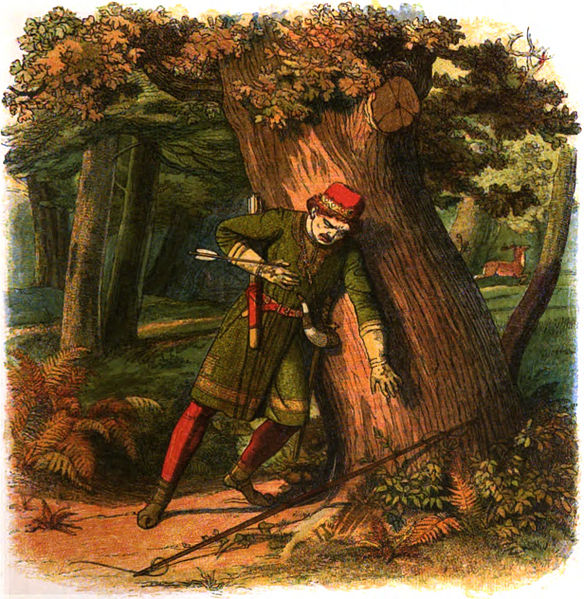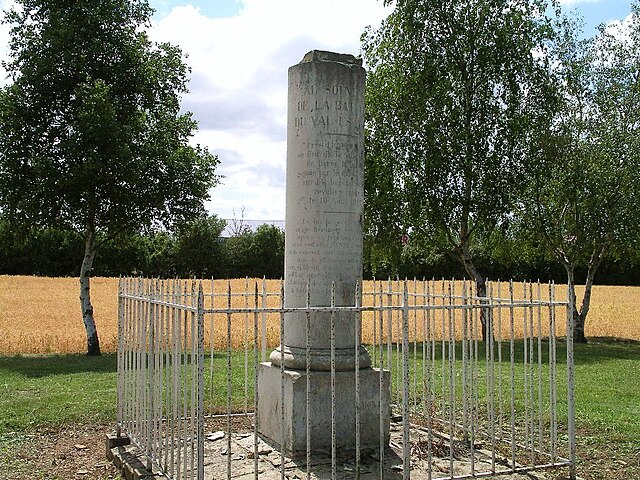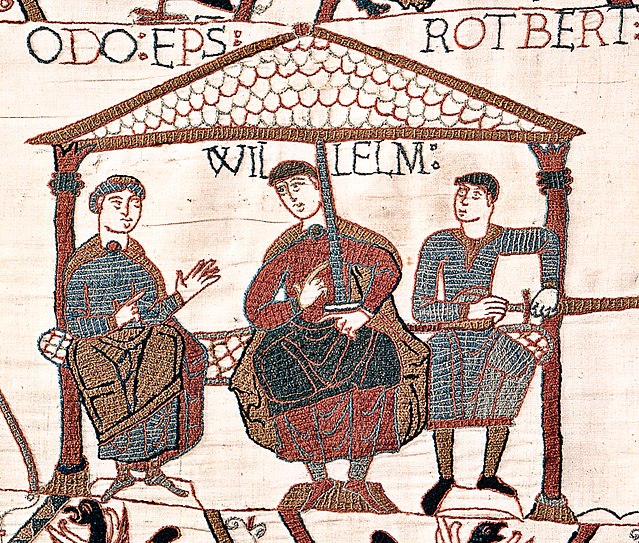William II was King of England from 26 September 1087 until his death in 1100, with powers over Normandy and influence in Scotland. He was less successful in extending control into Wales. The third son of William the Conqueror, he is commonly referred to as William Rufus, perhaps because of his ruddy appearance or, more likely, due to having red hair.
Miniature from Matthew Paris's Historia Anglorum, c. 1253
Engraving of the Great Seal of William II
Silver penny of William II showing a crowned head facing forward (1089), Yorkshire Museum, York
William's death from Doyle's English history (1864)
William the Conqueror, sometimes called William the Bastard, was the first Norman king of England, reigning from 1066 until his death. A descendant of Rollo, he was Duke of Normandy from 1035 onward. By 1060, following a long struggle to establish his throne, his hold on Normandy was secure. In 1066, following the death of Edward the Confessor, William invaded England, leading an army of Normans to victory over the Anglo-Saxon forces of Harold Godwinson at the Battle of Hastings, and suppressed subsequent English revolts in what has become known as the Norman Conquest. The rest of his life was marked by struggles to consolidate his hold over England and his continental lands, and by difficulties with his eldest son, Robert Curthose.
William is depicted in the Bayeux Tapestry during the Battle of Hastings, lifting his helmet to show that he is still alive.
Château de Falaise in Falaise, Lower Normandy, France; William was born in an earlier building here.
Column at the site of the Battle of Val-ès-Dunes in 1047
Image from the Bayeux Tapestry showing William with his half-brothers. William is in the centre, Odo is on the left with empty hands, and Robert is on the right with a sword in his hand.

